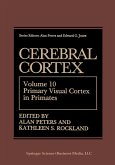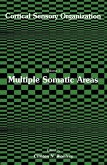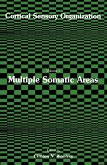Volume 10 is a direct continuation and extension of Volume 3 in this series, Visual Cortex. Given the impressive proliferation of papers on visual cortex over the intervening eight years, Volume 10 has specifically targeted visual cortex in primates and, even so, it has not been possible to survey all of the major or relevant developments in this area. Some research areas are experiencing rapid change and can best be treated more comprehensively in a subsequent volume; for example, elaboration of color vision; patterns and subdivisions of functional columns. One major goal of this volume has been to provide an overview of the intrinsic structural and functional aspects of area 17 itself. Considerable pro gress has been made since 1985 in unraveling the modular and laminar organi zation of area 17; and this aspect is directly addressed in the chapters by Peters, Lund et al., Wong-Riley, and Casagrande and Kaas. A recurring leitmotif here is the evidence for precise and exquisite order in the interlaminar and tangential connectivity of elements. At the same time, however, as detailed by Lund et al. and Casagrande and Kaas, the very richness of the connectivity implies a multi plicity of processing routes. This reinforces evidence that parallel pathways may not be strictly segregated. Further connectional complexity is contributed by the various sets of inhibitory neurons, as reviewed by Lund et al. and Jones et al.








